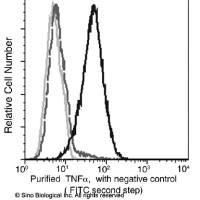Normal and tumor stem cells are present in rare quantities in tissues and this has historically represented a major hurdle to in-depth investigations of their biology. In the case of the mammary gland, the relative promiscuity of the immunophenotypical markers described in several studies for the isolation of human and mouse mammary stem cells limits their usefulness, in particular when highly purified mammary stem cell fractions are required for an in-depth molecular and functional characterization (Stingl et al. Nature 439:993–997, 2006; Shackleton et al. Nature 439:84–88, 2006; Liao et al. Cancer Res 67:8131–8138, 2007; Eirew et al. Nat Med 14:1384–1389, 2008; Raouf et al. Cell Stem Cell 3:109–118, 2008; Lim et al. Nat Med 15:907–913, 2009). In fact, most so-called stem cell markers are not selectively expressed by mammary stem cells, but are instead also expressed by terminally differentiated luminal and/or myoepithelial cells or by bipotent progenitors within the mammary gland (Stingl et al. Nature 439:993–997, 2006; Eirew et al. Nat Med 14:1384–1389, 2008; Raouf et al. Cell Stem Cell 3:109–118, 2008; Stingl et al. Differentiation 63:201–213, 1998; Jones et al. Cancer Res 64:3037–3045, 2004). Here, we describe a new methodology that does not require the use of immunophenotypical markers to obtain highly pure populations of mammary stem cells. This approach exploits two functional properties of mammary stem cells: (1) their quiescent or slowly proliferative phenotype, as compared to their progeny; and (2) their ability to survive and proliferate in anchorage-independent conditions, giving rise to clonal spheroids, commonly known as “mammospheres” (Dontu et al. Genes Dev 17:1253–1270, 2003; Pece et al. Cell 140:62–73, 2010; Cicalese et al. Cell 138:1083–1095, 2009). In the context of mammospheres, stem cells, which perform one or two rounds of division and then reenter quiescence, are identified based on their ability to retain a lipophilic fluorescent dye, PKH26, that is by contrast progressively lost by dilution in the actively proliferating progeny of precursors (Pece et al. Cell 140:62–73, 2010; Cicalese et al. Cell 138:1083–1095, 2009). Following mammosphere dissociation, the differential degree of PKH26 epifluorescence displayed by stem cells compared to precursor cells is exploited for their purification by FACS sorting. As a result, the scarcely represented PKH26-labeled mammary stem cells are purified to near homogeneity and can be used for further molecular and biological studies.






